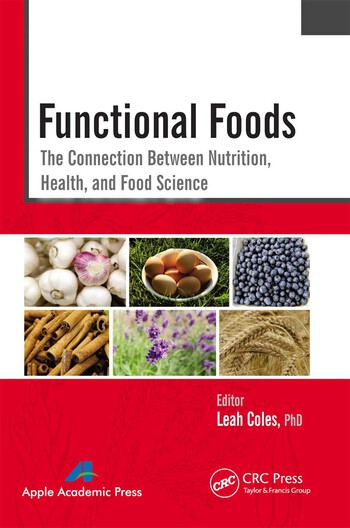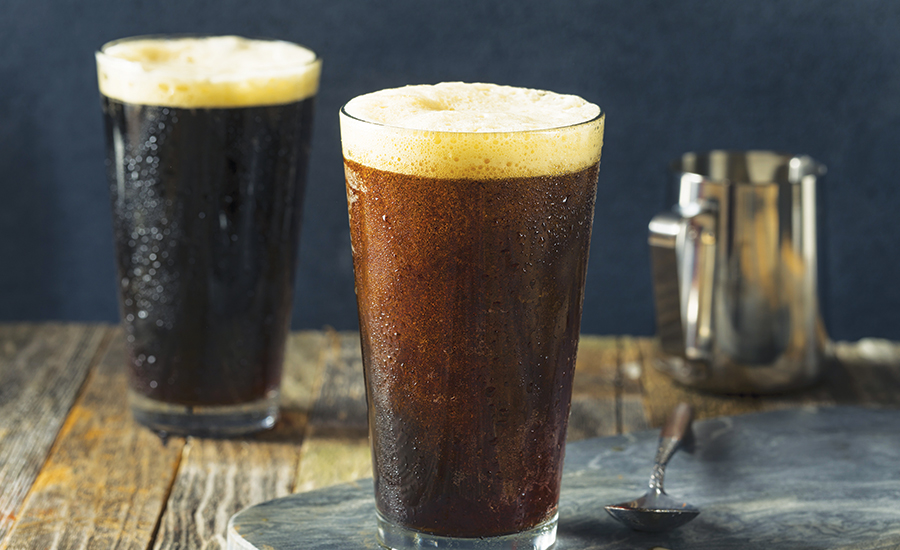New Strategies For Masking And Modifying Flavor
Scientists recently discovered the existence of taste receptors that reside in the gastrointestinal tract, internal organs, and central nervous system

SOURCE: Tate & Lyle Americas Inc. (www.tateandlyle.com)

Vanilla, with more than 100 aromatic compounds, can at once mask bitter notes (as in tea); enhance complementary flavors, such as chocolate; and boost sweetness. SOURCE: Virginia Dare Inc. (www.virginiadare.com)

One of the biggest discoveries in masking technology was of compounds in mushrooms that are powerful bitter-blockers, without altering the flavor. SOURCE: MycoTechnology Inc. (www.mycotechcorp.com)

Cyclodextrins have proven a technological breakthrough in microencapsulation, allowing for the effective coating of compounds that could impart negative flavors or aromas in a formulation. SOURCE: Wacker Chemie AG (www.wacker.com)

Combining natural fruit flavors with sugar alcohols can counteract off- flavors from high-intensity sweeteners such as stevia and monkfruit. SOURCE: Prinova Group LLC (www.prinovausa.com)

Subtly sweet fruits, such as blueberries, make natural flavor counterpoints to strong, meaty flavors in savory sauces or can balance high-acid notes in vinegars. SOURCE: US Highbush Blueberry Council






Taste generally comprises the sensation categories of sweet, sour, salty, bitter, and umami that are experienced in the mouth. (Astringency has also been debated as a taste, but since gustatory as well as non-gustatory epithelia react to an astringent stimulus, it is not considered a taste.) Yet taste receptors are not only found on the tongue; scientists recently discovered the existence of taste receptors that reside in the gastrointestinal tract, internal organs, and central nervous system.
Despite the different locations, taste and aroma perception do not seem to be completely independent; they combine in the brain. Aroma, in fact, is the most important part of flavor. Research has disclosed that about 80% of that which makes up the perception of taste is olfactory. Aromas, complete with flavor molecules, are perceived on the olfactory epithelium in the nasal cavity.
These compounds can reach the epithelium either orthonasally (by sniffing) or retronasally (from the back of the mouth). More than 300 individual receptors have been identified in the olfactory epithelium, and, working synergistically, they’re responsible for the thousands of aromas humans can distinguish.
Bitter End
Bitterness (as opposed to, say, the astringency of lime peel, cilantro, or fresh mustard greens) is one of the most unwanted tastes in food. The perception of taste qualities can vary markedly between individuals, and bitterness, especially, is not perceived by everyone with the same intensity. Bitter sensation is triggered by a variety of structurally different, non-volatile compounds that interact with one of the 25 known bitter receptors in the mouth.
The aversion to bitterness seems to be an innate trait of human beings—and most mammals, in fact. However, continuous exposure to bitter tastes can change preferences. Recent research even suggests there could be a relationship between a bitter preference and certain personality traits. Yet many beneficial nutrients, such as polyphenols from green tea, cocoa, or caffeine, are bitter.
In spite of studies indicating that some bitter components might modulate eating behavior and energy intake, reducing bitterness is a prime objective in a number of formulations. This is especially the case with confections, such as chocolate.
Masking the inherent bitterness of components leads to an increase in sweetness and thus a potential reduction in sugar or sweetener needed. Similar considerations apply to increasing sweetness or saltiness perception in other foods.
A number of trends in the food and beverage industry are driving the development of better and more effective maskers. High-intensity sweeteners, like stevia or sucralose, have generated strong interest in masking, because they have unwanted bitter or licorice aftertastes.
Plant- or dairy-based proteins are used to increase the protein content of many foods. Yet these can have “beany” or metallic offflavors that reduce consumer acceptance. Similar negative off-flavors can come from functional ingredients, such as texturants or stabilizers (e.g., hydrolyzed proteins), or
nutraceuticals.
Modifying Strategies
In theory, there are three distinct techniques to mask or block a flavor: encapsulation, peripheral interaction (receptor inhibition in the mouth), and central cognitive interaction (mixture suppression in the central nervous system). It is not always known why certain compounds inhibit off-flavors and taste. Often, an approach including several techniques is used to solve a taste modification challenge.
Foods are highly complex and typically contain several synergistic or layered flavor components and qualities that influence each other. Combinations of different taste qualities can generate a different intensity compared to the individual tastes alone. The interaction between the five main tastes described above occurs on a cognitive interaction level.
Mixtures of compounds with the same taste qualities—for example, two sweet compounds—also interact in sometimes unexpected ways. The resulting mixture will often have a different quality than the two separately. To complicate the whole system, the effects are concentration-dependent, since taste perception is not a linear function of concentration. Thus, interactions of tastes also are not linear.
Forms of glutamic acid (glutamates) are natural primary sources of umami in many savory foods. They’re also able to suppress sweet, harsh-salty, and bitter flavors. They do this by exciting taste receptors “tuned into” the meaty/mushroomy flavor of savory foods. Monosodium glutamate (MSG) is perhaps the most common of the glutamates added to foods. Many consumers, however, have been avoiding MSG when it appears on a label. But extracts and concentrations of tomatoes and mushrooms, rich in natural glutamic acid compounds, are stepping up to take MSG’s place.
Tomato concentrates can be used to excellent effect for fine-tuning umami, savory, and vegetable flavors that can be off or bitter due to seasonality. In this manner, they can be customized to provide other flavor notes to mask off or bitter flavors while boosting desired savory notes. Another advantage of concentrates and extracts of tomatoes, mushrooms, and other such botanical sources is that they can appear as such on labels.
Sweet Cover
The conclusion that sucrose or other sweeteners can be used to suppress other, potentially unwanted tastes is not new. Many people drink coffee with sugar, and it is often used in other bitter beverages. Even Mary Poppins used sugar in dispensing her medicine! However, using ample sugar or MSG does not comply with a healthy lifestyle that many people seek. Therefore, other options to modify bitter tastes are often applied today.
Sweetness is used to mask not only bitter but also acidic tastes. This is important in wines or fruit juices, especially citrus juices that can contain strong-flavored volatile oils from pith, seeds, and peels that are the result of large-scale juice operations. In general, at medium to high concentrations, sweet tastes suppress other tastes. (Another example is how saltiness suppresses bitterness, yet the reverse doesn’t happen.) And, as is known by bakers, at very low concentrations, salt enhances sweetness. This has been put to great use in the salted caramel and salted chocolate trend of the past half-decade.
Sugar alcohols (polyols) are derivatives of sucrose, glucose, starch, or other carbohydrates. Since they are taken up in the small intestine either slowly or not at all, they have fewer calories per gram than sugars, with a lower glycemic index.
When traditional sweeteners such as sucrose are replaced with high-intensity sweeteners, the missing bulk or mass can be substituted with certain polyols to retain the other functional properties of sucrose. They are heat-stable and do not lose their sweetness under typical processing conditions.
Due to their lack of an aldehyde group, they do not brown—they do not participate in the Maillard reaction. All these traits allow polyols to be successful as maskers in a number of formulations. In the US, most polyols are produced from genetically modified precursors, but some are available GMO-free. No special labeling is required.
Most of the polyols have a cooling effect due to their high heat of solution. The strength of the cooling varies among the polyols, with maltitol and isomalt exhibiting minimal cooling effects and xylitol having the highest effect. Cooling can be advantageous in flavor combinations where cooling supports the flavor. Thus, xylitol is often used to enhance mint or menthol flavors in gums and candies.
Another polyol, erythritol, is commonly used in combination with stevia to modulate its sweetness and mask the licorice-like aftertaste. It is available in premixed forms. Isomalt not only masks stevia’s aftertaste, it also masks metallic aftertastes in other sweet products and can enhance sweet flavors.
Another sweetener that can be used as a masker as well is honey. Unique fla-vor components in honey also enhance some cooling flavors, such as mint. These components boost sweetness, with less of the nu-tritive sweetener needed, while covering or softening stronger flavor notes.
Aromatic Arts
Taste and aroma interactions require careful modifications in taste intensity when combined with specific aromas. An example of one of the more popular ingredients used to accomplish this “sleight of palate” is vanilla. The singular aroma vanilla—a product of more than 100 specific chemical compounds—does not trigger sweetness by itself, but in the presence of a sweet taste, it intensifies the sweetness.
The familiar, congruent combination of sweet and what can be described as “floral aromatics” is used to good effect to both cover up any bitter or astringent back notes and aftertastes through boosting the perception of sweetness. A sweet sensation from vanilla is an acquired interaction that works especially well in formulations.
Vanilla is one of the most extensively used flavors in the food industry, and its use to increase sweetness has a long history. It is used in most chocolate confections to at once enhance the flavor and aroma of the cacao and to mask the bitter notes natural to cocoa beans (see “20° of Flavor: Chocolate and Vanilla,” PF July 2017). Highly aromatic fruits also are strongly associated with sweetness. Strawberry, lemon, passion fruit, and lychee are common examples. (Although not fruits, caramel and almonds are similar aromatic flavor sources associated with sweetness.)
Even non-aromatic fruits can provide masking flavor notes when used in specific products. “In dairy products, the natural high sugar level in blueberries helps to block the sour taste sometimes associated with yogurt, while naturally sweetening the product,” notes Tom Payne, an industry specialist for the US Highbush Blueberry Council. “A number of drinkable yogurts utilize blueberries and blueberry purée to impart a natural, less-sour taste and colorful appeal.”
In a boon to product developers, research has demonstrated taste-aroma interactions work even when the aroma is presented at sub-threshold level. This means that, without realizing one is inhaling a specific smell, the aroma still can influence the perception of flavor in a food or beverage. This applies to aromas that enhance both sweet and salty flavors. This can make aromatics perfect flavor maskers.
Similar aroma-taste associations have been found for saltiness with sardines, anchovy, bacon, and tuna, as well as ham and Roquefort cheese. For these interactions, the perceived saltiness was more intense if the aroma was presented orthonasally compared to retronasally.
Mushroom Maskers
Recently, a new bitter blocker based on mushroom mycelia was developed. The technology involves higher order mushroom mycelia that are clean-grown in an organic liquid medium. The resulting supernatant—containing the compounds released by the mushroom and part of the mushroom mycelium itself—is dried to a powder and either pasteurized or sterilized.
The resulting powder consists of primarily carbohydrate-based compounds (including chitin, β-glucans and glucuronic acid) as well as aminolipids (on one or two amino acids linked to a fatty acid through an amide bond, plus sometimes another through an ester bond), salts, amino acids, and nucleic acids.
Research revealed that the powder is especially effective at blocking a range of bitter tastes throughout a variety of applications. It has been applied with success to formulations using monk fruit, as well as to coffee, cacao, and chocolate, and other foods and beverages.
There are 25 known bitter receptors on the palate and, to date, no single ingredient has been able to block them all. The mushroom mycelium compound, however, seems to have the potential to be a sort of “magic wand” masker in this respect. While this has yet to be confirmed, peer-reviewed research is in the works to discover just how much of a masker panacea the ingredient could be.
Currently, the most prominent application of this new masker is in conjunction with stevia. It seems to reduce the bitter and metallic aftertaste as well as the sweet lingering. Sweetness is not affected. The product appears to work with even low percentages of steviol glycoside (60% versus the 90-99% used in formulations today), something that previously had been difficult to achieve.
Dosing of the mushroom-based product is typically around 1-10 ppm. It apparently does not negatively impact shelflife and is heat-stable. Since only the mycelium of the mushrooms is used, no potentially allergenic spores are present in the product, and no allergens have to be listed on the label. It can be labeled as either “natural mushroom extract” or “natural flavor” and is non-GMO and gluten- free, organic, vegan, and certified kosher-pareve and halal.
Since the compound reduces the bitterness not only of sweeteners like stevia but also of cocoa, it is possible to reduce sugar in cocoa-based products without negatively affecting taste and flavor. This could prove a boon for makers of weight-management food and beverage products.
Cap It Off
Encapsulating shields ingredients from interacting with any receptors, and thus allows ingredients with unwelcome tastes to pass through the mouth without eliciting negative feelings. The biggest breakthrough in encapsulation came when the technology allowed fish oil to be encapsulated. A rush to market of a number of products with added DHA and EPA omega-3 fatty acids included chocolate, orange juice, dairy foods, and other sweet or nonsavory products.
Microencapsulation also protects ingredients from oxidation and interaction with other food components that can in turn create off-flavors. Iron sulfate, for example, colors blue any hot cereal that contains banana, and creates a strong metallic taste.
Encapsulation of the iron sulfate with hydrogenated oil reduces color as well as the taste changes. The type of encapsulation can influence bioavailability, yet intelligent design of the encapsulation technology can greatly reduce that risk.
There are many different encapsulation materials available for the food industry. Starch derivatives are the most prominent ones; these include amylose, amylopectin, dextrins, celluloses, and their derivatives. In addition, pectin, gum Arabic, carrageenan, alginates and other polysaccharides can be employed, depending on the desired characteristics. Protein, lipids, waxes, or even shellac have their use in this physical method of masking as well.
In other applications, hydrogenated vegetable fat often is used to encapsulate vitamins and minerals. Encapsulated compounds, especially iron compounds, are recommended for flour fortification but also for applications in granolas, bars, confections, and dry milk. This form of encapsulated material is not heat stable, and thus cannot be used in products that require hot processing.
Circular Logic
Cyclodextrins are an example of a recently developed carbohydrate-based flavor masker. These circular fiber compounds can protect lipids from oxidation and subsequent off-flavor development, while reducing bitterness via hydrophobic interactions with bitter compounds.
Having a unique cup shape, the glucose-ring molecules act as a sort of
natural partial encapsulation mechanism. The inside of the molecule is hydrophobic (repelling water) and the outside hydrophylic (attracting water).
Use of cyclodextrins must be addressed cautiously, as in some cases they can lead to interaction with flavor components that might change the overall flavor perception of the product. Also, they can interfere with other agents used to block bitter tastes. Ingredient makers have ingredient scientists on hand to help developers best deploy the masker in formulations.
Produced enzymatically from starch, cyclodextrins have been used to great
success with green tea, ginseng beverages, and similar beverages. The catechins in green tea and ginsenosides in Panax ginseng—both highly desirable and beneficial antioxidants—have strong flavors that can make a concoction taste more like medicine than a beverage. Cyclodextrins block the negative flavor, as well as cover any off-aromas in a product as well.
Another benefit to cyclodextrins’ aroma- interrupting capacity is that they help cover the particularly strong and unmistakable odors of garlic and onion. As noted above, the interplay of aroma and flavor can be critical. For all these flavors and flavor systems designed to mask, counter, balance, or enhance specific taste profiles, flavor chemists can be valuable assets. Collaboration with flavor manufacturers allows processors to employ tailor-made solutions for specific masking challenges in food and beverage formulation.
Florentine Hilty-Vancura, PhD, is a nutrition and food science research chemist and specialist in nutraceutical and functional ingredients and their applications in food and beverage formulations. Her areas of expertise include experimental design and nanoparticle engineering, with emphasis in designing and testing nanostructured compounds for nutritional applications. A recipient of the Nestlé Nutrition Award, Switzerland, as well as the ETH Medal for outstanding PhD thesis, she is the author of multiple scientific papers and articles. She can be reached at florentine.hilty@gmail.com or through Prepared Foods magazine.
Originally appeared in the September, 2017 issue of Prepared Foods as Mask Ball.
Size Matters
Recent research shows that nanostructured iron compounds might be the next generation of food fortificants, combining the desirable benefits of iron without the taste- and color-influencing properties of free iron.
High on Maskers
“Cyclodextrins have been used for decades in pharmaceutical and other specialized formulations, but with new technology having driven prices way down, they’ve been rediscovered by the food industry,” says Robert Boutin, a chemist and president of food and pharmaceutical consulting firm Knechtel Inc. “Their unique structural qualities have proven ideal for masking less pleasant tasting components in foods. Newer ingredients sometimes require unique formulating approaches and technologies, and a good example has been in our work masking the strong-tasting cannabis compounds, such as THC [tetrahydrocannabinol] or CBD [cannabidiol] in medicinal foods. We found that cyclodextrins, especially the gamma form, are beneficial in flavor masking, emulsion stabilization, and generating various other product quality improvements.” Boutin adds that, while still a little more expensive than other approaches, the net result in using cyclodextrins has made masking “better, easier, and less complicated.”
Fast Fact
Not only the texture but also the shape of a product can influence the sweetness. In testing perceived flavor in chocolates, researchers found that round pieces taste sweeter than angular pieces, and the latter can even be perceived as tasting more bitter than their round counterparts.
Enemy of My Enemy
Although it might seem counterintuitive, off-flavors can sometimes be overcome by matching them with a flavor that already contains components of the off-flavor. For example, the beany notes of soy can be complemented with peanut or other nut flavors and thus mask the off-flavor. Or, sweet cream or savory cheese flavors can mask off-flavors from whey. Another approach is to use the undesired flavor as a balancing note for a completely new flavor combination.
Looking for a reprint of this article?
From high-res PDFs to custom plaques, order your copy today!













